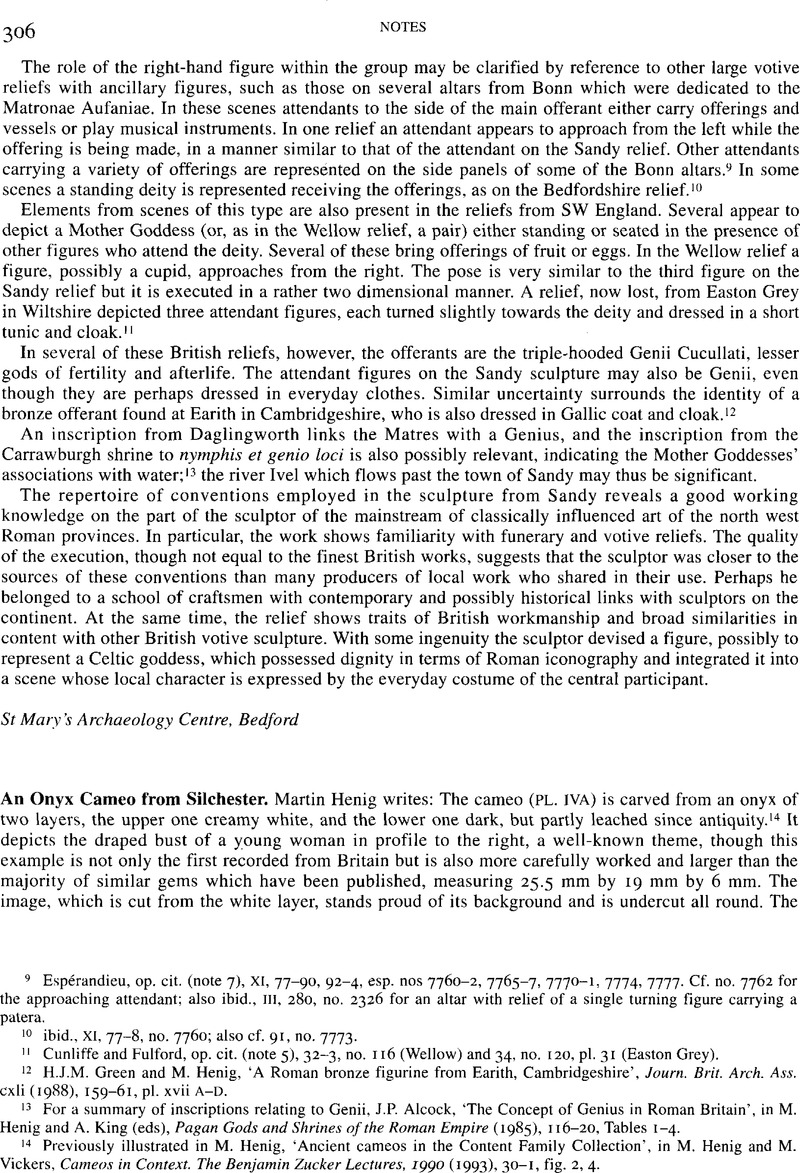No CrossRef data available.
Article contents
An Onyx Cameo from Silchester
Published online by Cambridge University Press: 09 November 2011
Abstract

- Type
- Notes
- Information
- Copyright
- Copyright © Martin Henig 1995. Exclusive Licence to Publish: The Society for the Promotion of Roman Studies
References
14 Previously illustrated in Henig, M., ‘Ancient cameos in the Content Family Collection’, in Henig, M. and Vickers, M., Cameos in Context. The Benjamin Zucker Lectures, 1990 (1993), 30–1, fig. 2, 4.Google Scholar
15 J.P.C. Kent, Roman Coins (1978), Nos 338, 343, 346 (Faustina II), 344 (Lucilla), 366, 367 (Crispina).
16 M. Henig, The Content Family Collection of Ancient Cameos (1990), No. 73; A. Dimitrova-Milcheva, Antique Engraved Gems and Cameos in the National Archaeological Museum in Sofia (1981), No. 296; H. Guiraud, lntailles et camées de l'époque romaine en Gaule, 48e supplément à Gallia (1988), No. 996.
17 B. Deppert-Lippitz, Goldschmuck der Römerzeit im Römisch-Germanischen Zentralmuseum (1985), No. 11.
18 Henig, op. cit. (note 16), No. 45; see also Henig, loc. cit. (note 14).
19 Henig, op. cit. (note 16), No. 85.
20 For Severan glyptics in Britain see Henig, M., Antiq. Journ. lxvi (1986), 378–80. Silchester has, incidentally, yielded an attractive intaglio of this very period depicting Caracalla.Google Scholar
21 For portrait-cameos from the Balkan region (generally of inferior quality) see, for example, Dimitrova-Milcheva, op. cit. (note 16), Nos 297–301, 303; I. Popović, Les camées romains au musée national de Beograd (1989), Nos 35–47; M. Gramatopol, Les pierres gravées du Cabinet numismatique de l'Académie Roumaine, Collection Latomus 138 (1974), Nos 659–62, 678. I suspect that the majority of the Content gems (above, note 16) had an Asian or Levantine provenance, and see also M. Henig and M. Whiting, Engraved Gems from Gadara in Jordan. The Sa'd Collection of Intaglios and Cameos, Oxford Univ. Comm. Arch. No. 6 (1987), Nos 417, 418.
22 E.J. Phillips, Corpus Signorum Imperil Romani. Great Britain I.i. Corbridge: Hadrian's Wall East of the North Tyne (1977), No. 247.
23 The cameo was found within the walled area of Silchester in the 1930s by Mr F. Merrick of Pamber Heath, Hants. His find was reported to Professor M. Fulford by Mr D. Russell. Mr Merrick has very generously donated the cameo to Reading Museum and Art Gallery.


